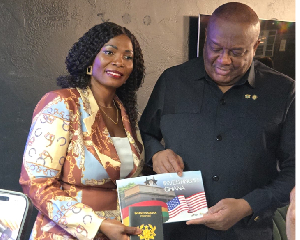The Economic Community of West African States (ECOWAS) comprises eight Francophone, five Anglophone, and two Lusophone countries. These countries were categorized into two zones namely; the WAEMU (West African Economic and Monetary Union) formed as an African Colony of France during the colonial era, and the West African Monetary Zone (WAMZ).
The WAEMU comprises seven francophone countries and one Lusophone country, and the WAMZ comprises five Anglophone countries, one francophone country, and one Lusophone country.
Comparatively, the WAEMU uses the CFA (XOF) as a common currency, and the WAMZ uses its sovereign currencies. Also, the WAEMU is macroeconomic fundamentally stable than the WAMZ due to the stringent monetary policy practices and laid down macroeconomic convergence criteria.
Additionally, the WAEMU intra-trade averages 13.7% above the overall average for the ECOWAS although the WAMZ is the economic hub of the sub-region. Therefore, the use of sovereign currencies by countries in the WAMZ could be a barrier to trade.
Despite the rattling effort of ECOWAS, the level of trade remained robust, below 12% of total trade. Studies have shown that the sub-region is plague with multitudinous barriers that inhibit the consolidated gains from intra-regional trade.
Even though some artificial barriers serving as a revenue stream, these barriers adversely affect the level of employment since it reduces the level of savings in real terms, divert trade flows to countries with relatively minimal barriers by affecting price, and increases the time taken to trade, therefore, reduces the level of trade.
In this background, the ECOWAS deems it fit to strengthen ties to improve the living standard through trade stimulation.
Empirically, when countries integrate, the volume of trade appreciates significantly to stimulate economic growth. In this context, such policy stimulating trade flows have proven to reduce asymmetric and external shocks, ensure convergence through business cycle synchronization, create employment opportunities hitherto economic growth.
Contrarily, some studies oppose the formation of the currency union due to the prevalence of asymmetry shock without admitting the prowess of trade-in annulling shock and the adverse effect of sovereign currencies, and high demand for foreign currencies compounding to the existing asymmetric shock among members.
Comparative Analysis of the ECOWAS to RECs in Africa
Verifiably, the most performing Regional Economic Communities (RECs) in Africa have currency arrangements that favour trade compared to the ECOWAS.
The Kenyan shilling, a convertible currency, facilitates trade in the East African Community (EAC). Also, the South African Rand, a convertible currency and an anchor currency for the Southern African Customs Union (SACU), facilitates trade in the Southern Africa Development Community (SADC).
According to the UNCTAD database, the EAC and SADC trade averages at 19.1% and 15.1% compared to 9.0% recorded by ECOWAS using averaged intra-trade data from 2000 to 2017.
The argument on Exchange Rate Volatility on Trade in the ECOWAS
Exchange rate volatility is presumed to have a small effect on trade flows due to country-specific analysis using a dataset measured in dollar equivalence, which reduces the marginal disparity of sovereign currencies. Also, the non-convertibility of currencies shadowed the effect of sovereign currencies on trade. Additionally, the use of foreign currency to undertake intra-regional trade has caused an economic discrepancy in the estimation of exchange rate volatility on trade.
Contrarily, recent empirical studies have shown that exchange rate volatility harms trade and is further worsened by the high demand for foreign currency to undertake intra-regional trade.
In conclusion, sovereign currencies culminate in the high trade costs in the sub-region compared to other trading blocs. As a result, the prevalence of conspicuous external shocks makes currencies more volatile and weakens investor confidence.
To improve the currency performance of sovereign currencies, there is an exigency to practice macroeconomic restrain by attaining the macroeconomic convergence criteria.
Opinions of Tuesday, 30 March 2021
Columnist: Abban Stanley















